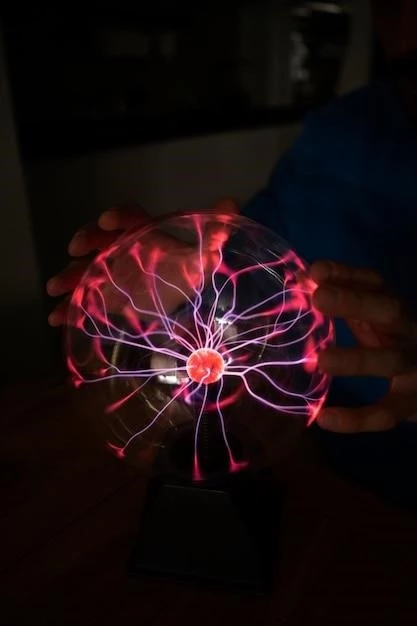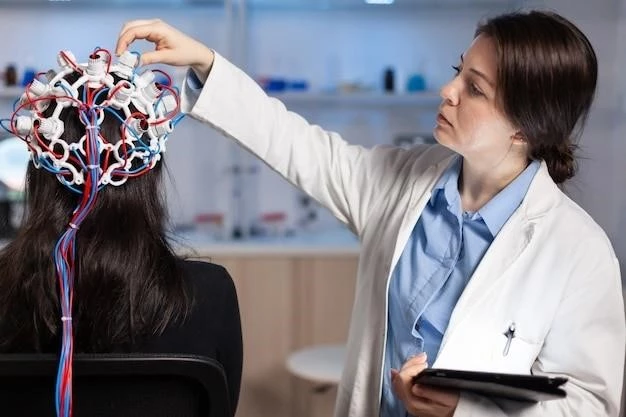Introduction to Hereditary Paroxysmal Cerebral Ataxia
Hereditary paroxysmal cerebral ataxia is a neurological disorder characterized by episodic ataxia‚
impacting coordination‚ balance‚ and movement. It is caused by gene mutations leading to
dysfunction in ion channels such as sodium‚ potassium‚ and calcium channels in the nervous system.
Explanation of the Disease
Hereditary paroxysmal cerebral ataxia is an autosomal dominant neurological disorder characterized by episodes of ataxia‚ affecting coordination‚ balance‚ and movement. It results from gene mutations impacting ion channels‚ such as sodium‚ potassium‚ and calcium channels in the nervous system. The dysfunction in these channels leads to episodic symptoms like tremors and poses challenges in daily activities.
Brief Overview of Hereditary Paroxysmal Cerebral Ataxia
Hereditary paroxysmal cerebral ataxia is a rare condition with autosomal dominant inheritance. It is caused by gene mutations affecting ion channels in the nervous system‚ leading to episodic ataxia episodes. Individuals may experience symptoms like coordination difficulties‚ balance issues‚ and tremors. Genetic testing plays a crucial role in diagnosing this disorder‚ guiding treatment and management strategies.

Understanding the Genetic Basis
Hereditary paroxysmal cerebral ataxia follows an autosomal dominant inheritance pattern linked to gene mutations that impact ion channels.
Autosomal Dominant Inheritance
Hereditary paroxysmal cerebral ataxia is inherited in an autosomal dominant pattern‚ meaning a single copy of the mutated gene from one parent can cause the disorder. This type of inheritance increases the likelihood of passing on the gene mutation to offspring and plays a key role in the familial transmission of the condition.
Gene Mutations Associated with the Disorder
Hereditary paroxysmal cerebral ataxia is linked to gene mutations that affect ion channels such as sodium‚ potassium‚ and calcium channels in the nervous system. These mutations disrupt the normal function of the channels‚ leading to impaired coordination‚ balance issues‚ and episodes of ataxia. Understanding these genetic alterations is crucial for diagnosing and managing the condition effectively.
The Role of Ion Channels in Neurological Disorders
The dysfunction of ion channels‚ including sodium‚ potassium‚ and calcium channels‚ contributes to neurological disorders.
Sodium Channel Mutations
Hereditary paroxysmal cerebral ataxia is associated with sodium channel mutations that disrupt normal nerve cell function; These mutations lead to neurological symptoms like ataxia‚ affecting coordination and movement. Understanding the impact of sodium channel dysfunction is crucial in diagnosing and developing targeted therapies for individuals with this genetic disorder.
Potassium Channel Mutations
In hereditary paroxysmal cerebral ataxia‚ mutations in potassium channels disrupt neural signaling‚ causing coordination and balance issues. These mutations affect the electrical activity of nerve cells‚ leading to symptoms like ataxia. Understanding the role of potassium channel dysfunction is essential in the diagnosis and development of appropriate therapeutic strategies for individuals affected by this genetic disorder.
Calcium Channel Mutations
Calcium channel mutations in hereditary paroxysmal cerebral ataxia disrupt nerve cell communication‚ leading to impaired coordination and movement. These genetic alterations impact the regulation of calcium in neurons‚ contributing to ataxia symptoms. Understanding the effects of calcium channel dysfunction is vital for accurate diagnosis and the implementation of targeted treatment approaches for individuals affected by this genetic disorder.
Impact on the Nervous System
Hereditary paroxysmal cerebral ataxia manifests neurological symptoms affecting coordination‚ balance‚ and movement.
Effects on Coordination
Hereditary paroxysmal cerebral ataxia impacts coordination due to disruptions in nerve signaling caused by ion channel mutations. Individuals may experience challenges in controlling movements and fine motor skills. Understanding the effect of this disorder on coordination is essential for evaluating and managing the neurological symptoms associated with ataxia.
Implications for Balance and Movement
Hereditary paroxysmal cerebral ataxia poses challenges for balance and movement coordination as a result of disruptions in ion channel function. Individuals may struggle with maintaining equilibrium and performing smooth movements. Understanding the implications of this disorder on balance and movement is crucial for implementing targeted therapeutic interventions to improve mobility and reduce the impact of ataxia symptoms.
Presence of Tremors
Individuals with hereditary paroxysmal cerebral ataxia may experience tremors‚ involuntary rhythmic movements‚ as a result of disruptions in nerve signaling due to ion channel mutations. Tremors can affect daily activities and quality of life. Recognizing the presence of tremors in patients with this condition is vital for comprehensive management and tailored treatment to address these motor symptoms.
Susceptibility and Symptoms
Hereditary paroxysmal cerebral ataxia is characterized by specific genetic susceptibility and symptoms.
Genetic Testing for Susceptibility
Genetic testing plays a crucial role in identifying susceptibility to hereditary paroxysmal cerebral ataxia. Through genetic analysis‚ specific mutations in ion channel genes can be detected‚ aiding in the accurate diagnosis and understanding of an individual’s risk for developing this neurological disorder. Early genetic testing can offer valuable insights into genetic predisposition and guide personalized management strategies for ataxia.
Common Symptoms of Hereditary Paroxysmal Cerebral Ataxia
Common symptoms of hereditary paroxysmal cerebral ataxia include episodes of ataxia characterized by coordination difficulties‚ balance issues‚ tremors‚ and impaired movement control. Individuals may also experience speech and swallowing problems during episodes; Understanding these prevalent symptoms is crucial for early detection‚ prompt intervention‚ and effective management of this autosomal dominant neurological disorder.
Diagnosis and Treatment Options
Diagnosis of hereditary paroxysmal cerebral ataxia involves genetic testing for specific mutations. Treatment focuses on symptom management.
Diagnostic Methods for Identifying the Disorder
Diagnostic methods for hereditary paroxysmal cerebral ataxia include genetic testing to identify specific ion channel mutations. Neurological exams and imaging studies may also aid in the diagnosis. Understanding the genetic basis and clinical presentation is crucial for accurate identification and differentiation of this autosomal dominant neurological disorder from other conditions presenting with similar symptoms.
Medication and Therapeutic Approaches
Medication and therapeutic approaches aim to manage symptoms of hereditary paroxysmal cerebral ataxia. While there is no cure‚ medications can help alleviate symptoms like tremors. Physical and occupational therapy play a crucial role in enhancing coordination and movement. Speech therapy may assist individuals experiencing speech and swallowing difficulties. Developing individualized treatment plans is essential for optimizing function and improving quality of life for patients with this neurological disorder.
Current Research and Advancements
Ongoing research focuses on understanding genetic mutations and developing novel therapies for hereditary paroxysmal cerebral ataxia.
Studies on Hereditary Paroxysmal Cerebral Ataxia
Research studies on hereditary paroxysmal cerebral ataxia are exploring the underlying genetic mechanisms and potential treatment targets. Investigations into the pathophysiology of ion channel mutations and their impact on the nervous system aim to advance diagnostic methods and therapeutic interventions. Collaborative efforts within the scientific community are crucial in uncovering new insights to improve outcomes for individuals affected by this neurological disorder.
Breakthroughs in Treatment Strategies
Recent breakthroughs in treatment strategies for hereditary paroxysmal cerebral ataxia focus on targeted therapies addressing ion channel dysfunction. Novel medications aimed at stabilizing neural activity and reducing symptoms show promise. Advancements in rehabilitation techniques tailor interventions for improving motor skills and quality of life in affected individuals. These innovative approaches offer hope for enhanced management and better outcomes in individuals living with this genetic neurological disorder.
Coping Strategies and Support
Individuals and families affected by hereditary paroxysmal cerebral ataxia benefit from tailored coping strategies and support.
Psychological Impact on Patients and Families
Hereditary paroxysmal cerebral ataxia can have a profound psychological impact on patients and families‚ leading to emotional distress and uncertainty. Coping mechanisms and psychological support play a crucial role in enhancing mental well-being and resilience. Counseling and support groups offer valuable resources to navigate the challenges associated with the diagnosis and management of this genetic neurological disorder.
Available Support Groups and Resources
Support groups and resources are instrumental for individuals and families navigating hereditary paroxysmal cerebral ataxia. These groups provide emotional support‚ information sharing‚ and a sense of community. Access to specialized healthcare professionals and online platforms offers valuable guidance and assistance in managing the challenges associated with this inherited neurological disorder. Utilizing these support networks can empower individuals to cope effectively and enhance their quality of life.
Conclusion
In conclusion‚ hereditary paroxysmal cerebral ataxia poses challenges that require comprehensive management strategies.
Recap of Key Points
Hereditary paroxysmal cerebral ataxia is an autosomal dominant neurological disorder due to ion channel mutations.
It affects coordination‚ balance‚ and movement‚ with symptoms like tremors‚ necessitating genetic testing for diagnosis.
Treatment involves medication and therapy to manage symptoms‚ while ongoing research explores new treatment modalities.
Support groups and coping strategies offer crucial support for individuals and families impacted by this disorder.
Future Prospects in Managing Hereditary Paroxysmal Cerebral Ataxia
Future prospects in managing hereditary paroxysmal cerebral ataxia involve advancing targeted therapies and genetic interventions.
Research aims to further understand the disease mechanism and develop personalized treatments for improved patient outcomes.
Enhancing support networks and integrating innovative technologies will play a significant role in enhancing care delivery and quality of life for individuals with this condition.
